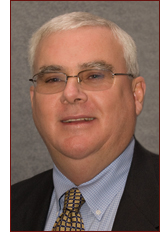August 2013: Chairman's Message
Words: John Smith
Chairman's Message
 John Smith
President
Mason Contractors Association of America
John Smith
President
Mason Contractors Association of America
As president of the MCAA, I am often asked what we are doing for you as mason contractors. The regime in Washington, D.C., right now is keeping us very busy. Your association has taken a stance on some key industry issues. Not in any particular order, but the first is immigration. There is so much controversy over immigration. We all know we need capable and well trained masons and laborers to perform for our companies.
The question is how to make these individuals support the system and not be a drag on our economy. They are hard workers and want to belong. The means and methods are what our legislators are trying to decide. As this decision effects our daily business decisions, we will continue to monitor these efforts and keep you up to date.
Just as important is health care. We all know how expensive this is for our businesses. Obamacare is the elephant in the room. We will continue to monitor and get further explanations of how this is going to affect our business. We definitely need to get this cost under control, but maintaining and forcing costs that our industry cannot absorb is the wrong way to go about it.
Having to deal with issues of limiting employment to 50 people is a huge problem for business people who have close to 50, and have to bid on work in order to get it. What number of employees do we use for our bids? If we use 50, we have added costs that are estimated to be in hundreds of thousands of dollars. If we don’t include it, we could have a huge financial obligation, if we are awarded bids that bring our employment levels to more than 50. We are in a catch-22 situation.
Hopefully, all of you are aware of the efforts the NCMA has taken to start a check-off program for standard concrete block units. This is vital to our industry. We will not be able to compete against other products that already have their check-off funds. This money will strengthen marketing and furnish new product development across the country. Our industry is currently so fragmented, this program will help bridge our efforts to market, research and educate as a cohesive voice.
Lastly is our involvement in D.C. with OSHA. We have joined a group of associations to evaluate and comment on a new directive from OSHA forthcoming on silica. Sometime this year, a new directive on monitoring and exposure limits to silica is due to arrive for the industry.?? This will affect all of our businesses – commercial and homebuilders.?? One of our lead partners on this issue is the National Association of Home Builders.?? This directive will likely change the way we operate and organize a jobsite as well as our hiring practices.?? It will also impact trades on any jobsite with silica exposure levels as low as .25.?? Rumor is that practices such as pushing a broom on the jobsite will no longer be permissible.
Please do not forget to join us in Orlando in October. Our Midyear Meeting is set for Oct. 2-4. We have three days of industry meetings along with many surprises at the Disney Parks. Why not take off three days and join us in Orlando with your family? I cannot wait to have you meet my grandchildren, Kayle, Isabel and Hudson. See you there.
Return to Table of Contents